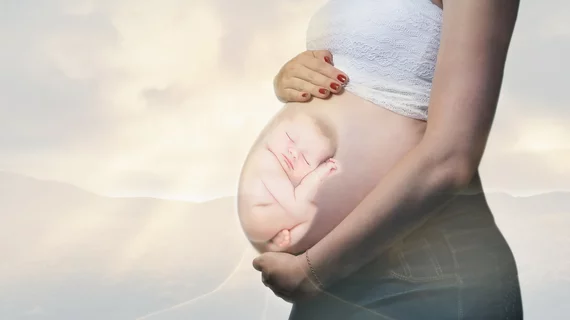4D ultrasound shows preborn humans ‘laughing’ over carrots, ‘crying’ over kale
Researchers in the U.K. have documented fetuses smiling when exposed to sweet flavors and frowning over bitter tastes.
The developing humans were aged 32 to 36 weeks. The flavors were administered as powder-carrying capsules ingested by mothers-to-be in two flavors—sweet carrot and bitter kale.
The project centered on 4D ultrasound imaging and is described in an article published Sept. 21 in Psychological Science [1].
PhD candidate Beyza Ustun of Durham University, psychology professor Jackie Blissett, PhD, of Aston University and colleagues state their study has important implications for researchers seeking to learn when and how smell, taste and flavor preferences develop in humans.
Potential next areas of inquiry, they suggest, might include the onset of oral and nasal chemoreception, “including the nature and timing of behavioral reactions to prenatal flavor exposure, fetal engagement of memory for flavors, and the potential role played by prenatal to postnatal continuity in perception and reactivity to the chemical environment.”
Nonmedical 4D Ultrasound Gets the Call
The team enrolled 100 pregnant women ranging in age from 18 to 40 years old. All were white Brits from Northeastern England.
The researchers used capsules because whole food breaks down in the gastric passage, rendering chemical signals diluted before reaching amniotic fluid.
Experimental participants underwent nonmedical 4D ultrasound after fasting for a time and then swallowing the capsules 20 minutes before scanning began.
The carrot capsules went to 35 women while 34 received the kale. A control group of 30 pregnant women received no capsules.
To control for the effects of maternal vegetable consumption on fetal exposure to the stimulus, Ustun and colleagues assessed the frequency of participants’ prior-week intake of nonbitter vegetables—carrots, potatoes, peas, beans, sweet corn—and of bitter vegetables (not only kale but also leeks, broccoli and cauliflower).
Laughter Faces Simple, Cry Faces Complex
Recording facial expressions as the fetuses received the flavors at 32 and 36 weeks, the team found various types of frowns (“cry faces”) corresponded with the kale flavor while smiles (“laughter faces”) went with the carrot.
Moreover, the cry faces grew in complexity between the two scan dates while the laughter faces remained simple and steady.
The researchers surmise this owes to smiles being less complex than frowns in particular signals.
Recorded signals included such readily observable actions as brow-raising, nose wrinkling, tongue showing, jaw dropping and lip puckering.
Do Prebirth Taste & Smell Experiences Affect Food Preferences for a Lifetime?
Ustun, Blissett and co-authors state their study is the first they know of to show that prenatal humans can detect chemosensory flavor information delivered in utero when mothers eat or drink.
Given previous research showing prenatal flavor experience is “embedded” and expresses after birth, the authors write, “it could be argued that repeated prenatal flavor exposures may lead to preferences for certain flavor profiles that are consistent with flavor experienced postnatally in very different contexts.”
They call for future studies to ask whether, or to what degree, tastes and smells experienced before birth affect food and drink preferences in early childhood and/or throughout the life cycle.
The study presents some arresting ultrasound images and is available in full for free.

